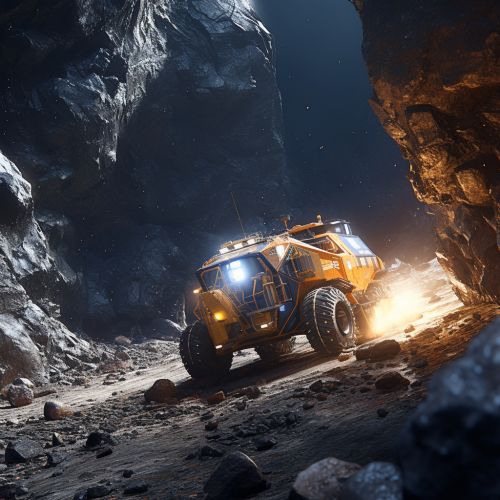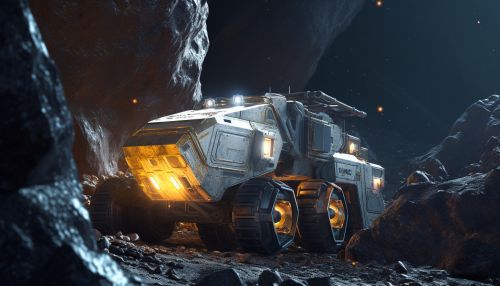Space Mining
Introduction
Space mining, also known as astrogeology, is the exploitation of raw materials from asteroids, planetary bodies, and other celestial objects. It involves the extraction of valuable minerals and other geological materials from bodies in the solar system. The concept of space mining has been in existence for over a century, but it has gained significant attention in the 21st century due to advancements in space exploration and technology.
History
The idea of space mining was first proposed in the late 19th century by Russian scientist Konstantin Tsiolkovsky. However, it remained a theoretical concept until the mid-20th century when the United States and the Soviet Union initiated their space programs. The first concrete proposal for space mining was made in the 1970s by American scientist and engineer Gerard K. O'Neill in his book "The High Frontier: Human Colonies in Space".
Types of Space Mining
There are three primary types of space mining: asteroid mining, lunar mining, and Martian mining. Each type presents unique challenges and opportunities.
Asteroid Mining
Asteroid mining involves the extraction of raw materials from asteroids. Asteroids are rich in valuable resources such as iron, nickel, titanium, and other precious metals. They also contain water, which can be used for life support and fuel in space missions.
Lunar Mining
Lunar mining refers to the extraction of resources from the Moon. The Moon is believed to be rich in resources such as helium-3, a potential fuel for nuclear fusion, and water ice, which can be used for life support and fuel.
Martian Mining
Martian mining involves the extraction of resources from Mars. Mars is known to have a diverse range of minerals and is believed to have water ice beneath its surface.
Techniques and Technologies
Space mining requires advanced technologies and techniques. Some of the key technologies include robotic mining, teleoperation, and in-situ resource utilization (ISRU).
Robotic Mining
Robotic mining involves the use of autonomous or semi-autonomous machines to perform mining operations. These robots are designed to withstand the harsh conditions of space and can operate independently for extended periods.
Teleoperation
Teleoperation refers to the remote operation of machines or systems. In the context of space mining, it involves controlling mining robots from Earth or a nearby spacecraft.
In-Situ Resource Utilization (ISRU)
In-situ resource utilization (ISRU) involves the extraction and utilization of resources at the site of exploration. It reduces the need to transport resources from Earth, thereby saving costs and resources.
Legal and Ethical Issues
Space mining raises several legal and ethical issues. The Outer Space Treaty of 1967, which forms the basis of international space law, does not explicitly address space mining. However, it prohibits the appropriation of outer space by any one country. This has led to debates about the legality of space mining.
Economic and Commercial Aspects
Space mining has the potential to be a lucrative industry. The resources extracted from space could be used in various industries on Earth, including electronics, construction, and energy. Several companies, such as Planetary Resources and Deep Space Industries, have expressed interest in space mining.
Future Prospects
The future of space mining depends on several factors, including technological advancements, legal developments, and market demand for space resources. With the increasing interest in space exploration and colonization, space mining is likely to play a crucial role in the future.
See Also


